12 Interesting Taurus Constellation Facts, Myths & FAQs
Last Updated on
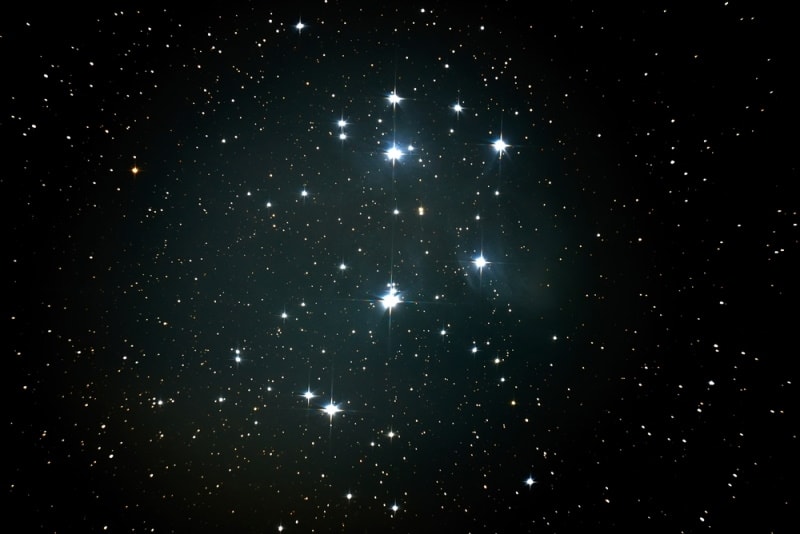
If you are interested in astrology and Greek mythology, you already know constellations look like humans, objects, or animals. Until now, we have around 88 officially recognized constellations.1 One of them is Taurus.
The ancient Greeks introduced the Taurus constellation about 7,000 years ago. The constellation also reminds us of Mesopotamia’s Akkadian Empire. In that period, the constellation got associated with a mythical beast called “Heavenly Bull.” The goddess Ishtar sent this bull to defeat the warrior Gilgamesh.
Thus, the Taurus constellation appears as a bull sweeping through the sky, similar to an Orion hunter. Orion raised the bull and used it as a shield for his protection. It’s also believed that the Taurus constellation was the first one in the Babylonian zodiac.
The constellation is full of surprises, exciting facts, and myths. So, let’s dive deeply into 12 facts about the Taurus constellation.

Top 12 Taurus Constellation Facts:
1. The Taurus Constellation Is Named After a Roman God
The Taurus constellation comes at its highest point anytime between April and May. According to the ancient Greek tradition, it is named after Zeus or Jupiter, a Roman god. Zeus transformed into a bull to access the real world.
The bull or Taurus symbolizes the arrival of the spring season. Many people also consider it a sign of fertility, but no authentic evidence exists.
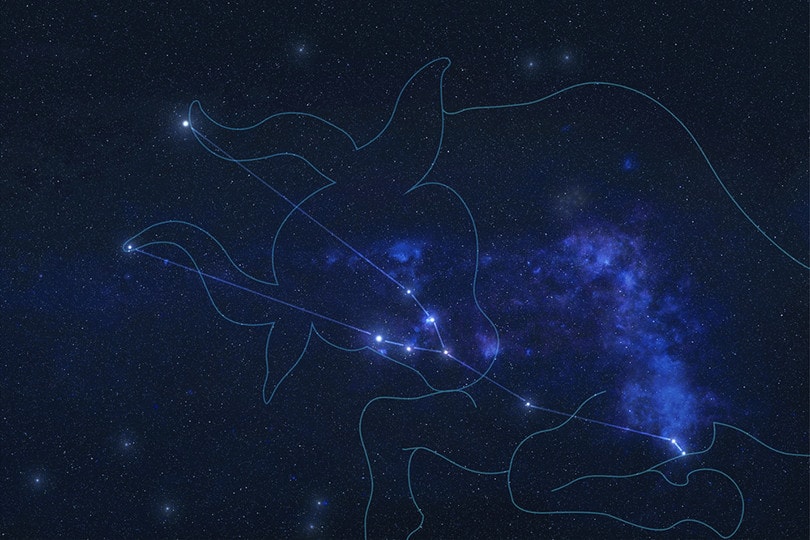
2. Venus Rules the Taurus Constellation
Planets usually rule the constellations. Legend has it that Venus rules the Taurus constellation. Venus symbolizes beauty, love, and luxury and is named after the goddess Venus.
It is believed that Saturn castrated Uranus, who was supposedly his father. As a result, the blood of Uranus mixed with the sea and saturated the sea foam. This gave birth to Venus, the goddess.
3. The Constellation Comes in the Zodiac Circle
Three zodiac signs come under the Earth element, known as Earth signs: Taurus, Capricorn, and Virgo. Taurus is the first sign of the Earth’s zodiac cycle that sets its entire foundation like a rock.
Myths also believe that Taurus act as a stabilizer. They provide safety to others and themselves. When the Earth comes under the impact of the Taurus’ planetary cycle, humans become mundane and take the right steps to determine their life’s purpose.

4. The Crab Nebula Is in the Taurus Constellation
The Crab Nebula or M1 is a supernova remnant of the massive explosion that occurred in the 11th century. The Far Eastern astronomers witnessed this explosion. This supernova remnant was observed with a 36-inch telescope, appearing like a crab in the constellation Taurus.
In fact, Nebula is the first astronomical object associated with the ancient supernova explosion. It is giant, approximately 10 light-years across, lying at a distance of 6,000 light-years from the Earth.
5. The Books of Lem Discuss the Journey to the Taurus Constellation
Stanisław Herman Lem is a sci-fi writer of Polish descent. His writings depict philosophy in a satirical way, filled with puns and humor.
In one of his famous works, “The Star Diaries of Jon Pacific,” he discussed a hero named Ijon Tichy who tried to hunt an animal named Kurdle living in the Taurus constellation. Lem wrote about the entire journey in this short series, telling people how they can reach the constellation.

6. The Constellation Is the Neighbor of Gemini, Aries, Eridanus, and Others
The Taurus constellation is in the Northern area, which lies in Orion’s Northwest region. The constellation is the highest in the evening sky, particularly during the months close to December.
It is also the neighbor of some popular constellations, including Keith, Aries, Gemini, Auriga, Perseus, and Eridanus.
7. Russians Can Observe the Taurus Constellation From Any Part of the Country
Between November and March, a bull travels through the sky in the Northern hemisphere. However, the constellation becomes more noticeable around January.
Around this time, the Taurus constellation is believed to cover 797 square degrees with a right ascension of 4 hours. The declination is around 15 degrees, making the constellation more visible between 90 degrees and -65 degrees latitude.
This area includes the entirety of Russia. So, if you’re Russian, consider yourself lucky since you can observe the Taurus constellation from any corner of the country.
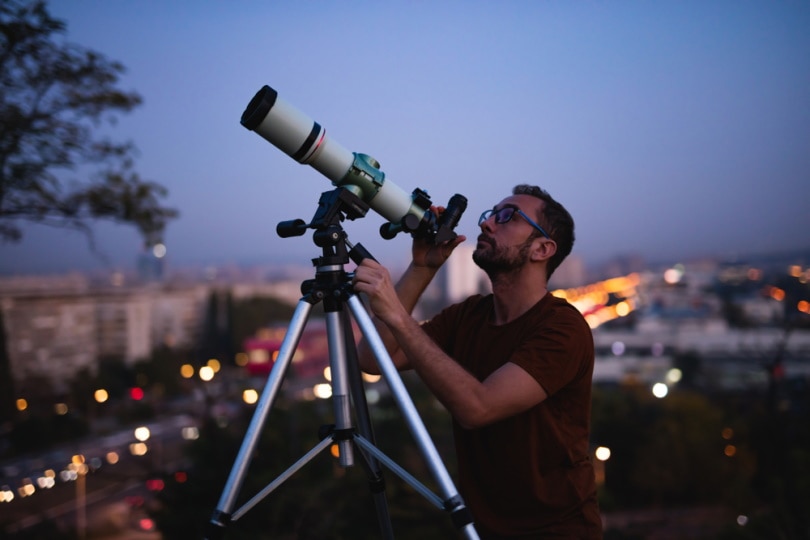
8. Greek Mythology: Zeus Transformed into a Bull
Many Greek myths are associated with the constellation Taurus. Most revolve around Zeus (the King of Gods) love interest. It is the time when his heart got stuck with King Agenor’s daughter, named Europe.
To access his newly found love, Zeus often disguises himself as a different animal and creature. So, to approach King Agenor’s daughter, he disguised himself as an attractive bull and mixed up in the King’s group. He planned to catch the eyes of Europe.
Things went according to Zeus’ plan, and Europe finally noticed the gorgeous bull. She reached the bull and climbed on it. The bull, which was actually Zeus, took Europe to the beach and surprised her by jumping into the water.
Once the bull reached the island of Crete, it turned into the human form of Zeus. Soon, Europe announced she was ready to marry Zeus and become his mistress.
According to several Greek myths, Europe and Zeus have three sons, and Zeus celebrated his win by placing the Taurus, or bull, in the sky.
9. The Taurus Constellation Has the Brightest Stars
The constellation is home to numerous bright stars, including Aldebaran, Alcyon, and Elnat. Aldebaran, also known as Alpha Tauri, is the brightest star in the Taurus constellation. It is a big red star, measuring around 45 times more than the Sun’s diameter.
Another bright star in the constellation is Elnat, also called Beta Tauri and the Gamma Charioteer. The latter name is because of the star’s location, as it lies on the border of the Charioteer and Taurus. Elnat is a big blue star, present 130 light-years from the Earth.
The third star is Alcyone, the brightest star among the “Seven Sisters” or Pleiades asterism. Alcyone means “central.” According to Greek mythology, this star is the representation of Atlantis’ nymph, who became Girei’s mother later.
Alcyone is a star system consisting of four giant stars, about 10 times the Sun’s radius.
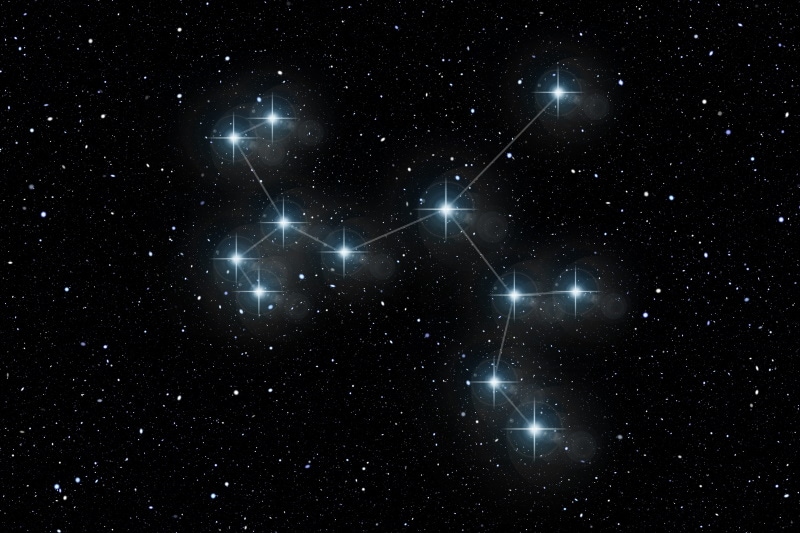
10. The Constellation Has Star Clusters
Hyades and Pleiades are the open star clusters in the constellation Taurus. The Hyades cluster is within the Orion Belt, visible through a small but noticeable blue and white star line. It lies in the Hunter Orion constellation.
By making a line toward the west through the Belt’s star, you’ll come across Aldebaran, the bull’s fiery red eye. Despite not being a part of the Hyades cluster, Aldebaran provides the perfect guidance to the cluster.
Aldebaran is almost 65 light-years away from the Earth, while Hyades is 2.5 times farther from it.
The Pleiades cluster is present about 430 light-years from its neighbor Hyades. In fact, it is one of the star clusters closest to the Earth. You can easily find both of these star clusters with binoculars.
The Pleiades consists of hundreds of bright stars around 10 light-years wide.
11. The Myth of the Seven Sisters
Popular as “The Seven Sisters,” the Pleiades is an asterism in the Taurus constellation. Greek mythology says that the hunter Orion previously pursued this asterism.
The Pleiades were known as the seven daughters of the Oceanid Pleione and the Titan Atlas. Many ancient theories also believe that the Pleiads were the half-sisters of the Hesperides and Hyades.
The Hesperides were the offspring of Atlanta, One Night, or Hesperis, while Hyades was the daughter of Aethra.
Both Aethra and Pleione were related to the Oceanians, two of the 3,000 daughters of Tethys and Oceanus. Both were the titans of the outer seas before Poseidon replaced them.
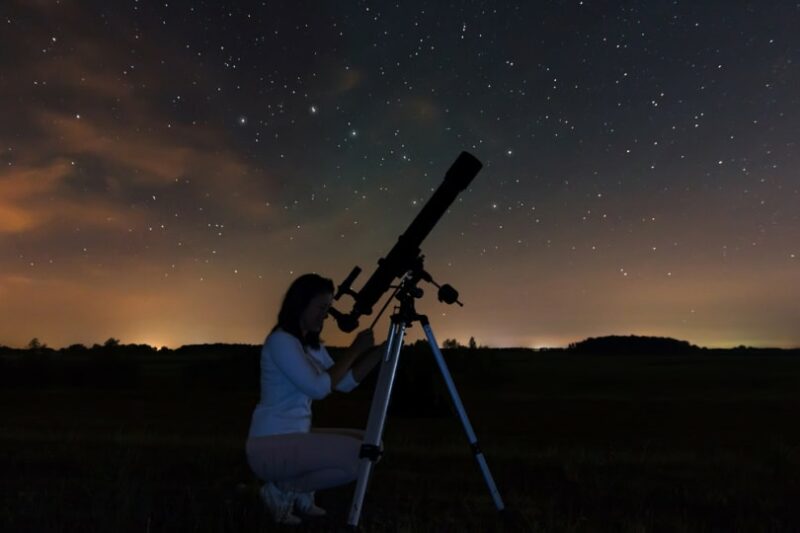
12. Eudoxus Gave the First Description of the Taurus Constellation
Eudoxus, Plato’s student, was the first person who described the constellation system between 400 and 350 BC. He left a stellar globe called the Eudoxian Orb to discover more about the constellation. Unfortunately, his work and the globe vanished.
All we have today is the story of Aratus. These writings discussed Scorpio, Orion, Gemini, Taurus, Sagittarius, and many other constellations.
One important thing to note is that Eudoxus didn’t describe the star regions from the sky’s Southern hemisphere. So, we can conclude that he discovered constellations in the Northern hemisphere.
The Aratus story also discussed the Evdox Sphere’s empty area. This area might correspond to the sky region that the observer living 36 degrees north couldn’t see. It is near the Greece latitude.

Final Thoughts
The Taurus is one of the 88 constellations discovered until now. It is represented by a bull and has many interesting facts.
Legends say that a Roman God named Zeus turned into a bull to seduce his love interest, Europe. Both got married and gave birth to three sons. To celebrate this, Zeus sent the bull to the night sky.
The Taurus is a neighbor to many famous constellations, including Gemini, Keith, and Aries. It has the three brightest stars, Aldebaran, Alcyon, and Elnat. Not only that, but the constellation has two open star clusters: Hyades and Pleiades.
Featured Image Credit: MartinRed, Shutterstock
Table of Contents
- Top 12 Taurus Constellation Facts:
- 1. The Taurus Constellation Is Named After a Roman God
- 2. Venus Rules the Taurus Constellation
- 3. The Constellation Comes in the Zodiac Circle
- 4. The Crab Nebula Is in the Taurus Constellation
- 5. The Books of Lem Discuss the Journey to the Taurus Constellation
- 6. The Constellation Is the Neighbor of Gemini, Aries, Eridanus, and Others
- 7. Russians Can Observe the Taurus Constellation From Any Part of the Country
- 8. Greek Mythology: Zeus Transformed into a Bull
- 9. The Taurus Constellation Has the Brightest Stars
- 10. The Constellation Has Star Clusters
- 11. The Myth of the Seven Sisters
- 12. Eudoxus Gave the First Description of the Taurus Constellation
- Final Thoughts
About the Author Jeff Weishaupt
Jeff is a tech professional by day, writer, and amateur photographer by night. He's had the privilege of leading software teams for startups to the Fortune 100 over the past two decades. He currently works in the data privacy space. Jeff's amateur photography interests started in 2008 when he got his first DSLR camera, the Canon Rebel. Since then, he's taken tens of thousands of photos. His favorite handheld camera these days is his Google Pixel 6 XL. He loves taking photos of nature and his kids. In 2016, he bought his first drone, the Mavic Pro. Taking photos from the air is an amazing perspective, and he loves to take his drone while traveling.
Related Articles:
15 Crucial Facts About Ultraviolet Rays & the Sun
What Constellation Is Spica In? The Interesting Answer!
10 Interesting Leo Constellation Facts, Myths, and FAQs
15 Interesting Pegasus Constellation Facts, Myths, and FAQs
6 Interesting Sagittarius Constellation Facts, Myths, and FAQs in 2024!
What Are Constellations? Where Did They Come From?
8 Interesting Libra Constellation Facts, Myths, and FAQs
What Is Infrared Radiation? Science-Based Facts & FAQ
